Matheran
Text by Susie Parr
On a Sunday morning, the car park for Matheran is crammed with haphazardly parked vehicles abandoned on Friday by the weekenders from Mumbai and Pune, 90 km and 120 km away respectively. As you arrive, a crowd of ragged men surrounds your vehicle, each one entreating the driver for the privilege of carrying your luggage up into town. The befuddled tourist watches aghast as the skinny victors in this bidding war heave large, heavy suitcases onto their heads and lead the way up the rocky path towards what one person described as ‘the city centre’.
Walking along behind the bearers, mixed feelings combine a deep-seated colonial shame, profound embarrassment, and anxiety about the state of the men’s vertebrae. These concerns are partially allayed seeing Indian tourists strolling in a care-free fashion behind their own coolies.
Because motorised vehicles are banned in Matheran, India’s smallest and only pedestrianised hill station, there are only four means of getting from the car park into town. You can walk; you can be pulled along in a rickety handcart that looks like it has been around since pre-Independence days; you can take a ride on a skittish horse, or you can catch the toy train, pushed up the narrow gauge track by a roaring diesel engine. Given the train’s erratic timetable and the scores of passengers squabbling over seat allocations, walking seems like the most attractive option and at 840 meters above sea level, the air is relatively cool and pleasant. It takes about thirty minutes to reach the town, walking along or beside the train track, through a thick evergreen forest where monkeys leap, chipmunks scamper and exotic birds warble and whistle.
You’d think that the total lack of traffic and the close, intense presence of the natural world would make for a peaceful stroll, away at last from the incessant horn sounding, the thunder of lorries, the buzz of motor scooters and the polluted air that hangs in a poisonous haze over the cities. But along the path, the air is clogged with the red dust kicked up by pedestrians and ponies, and thick with the smell of manure. Cries of ‘Side!’ interrupt any reverie as bearers trundle people, luggage and goods along in the handcarts.
As bands of horses charge along the path, their handlers bawl and haggle, and one is repeatedly invited to give this form of transport a try. Walking along sedately behind your suitcases, you quickly learn that a polite ‘No thank you’ while avoiding eye contact is the best way to counter the constant litany of offers: ‘Handcart, Madam?’ ‘You try horse sir?’
But other visitors to Matheran provide by far the noisiest accompaniment to the walk. Gangs of young men shout jokes back and forth, clutches of young women shriek and giggle, and extended family groups exchange banter and laughter, all at full volume. With its basic hotels and rest homes for railway employees and other workers, Matheran is predominantly a resort for the lower middle classes. Air conditioning has made the hill station almost obsolete as an escape from the heat for the rich and elite.
Westerners are rare, as evidenced by the curious stares and muffled giggles elicited as you pass by. Some of the braver visitors try out their English: ‘Hello Aunty! Where are you from? You like India? What is your name?’ Each equipped with their own smart phone, groups of teenagers egg each other on. They can become quite bold, asking to take your photo or for you to join them in a selfie. Once one selfie is taken, everyone else has to have one, until you finally excuse yourself and break away from the group, as they collapse in laughter.
The main drag through Matheran is lined with stalls, cafes and shops selling chikki (a local delicacy), cakes, snacks, soft drinks, chai, thali, tattoos, kulfi, handicrafts and hats. There is a tired looking post office with a corrugated iron roof. On either side of the road, hotels and holiday homes rise up, some fairly modern but others housed in buildings that are over one hundred years old, erected by the British seeking respite from the heat of the plains. The Hermitage, the Woodland, the Regent, Cecil House, Lord’s Hotel and scores of other establishments offer ‘spacious, comfortable, clean accommodation, disco, playground, reasonable rates’. Some even boast pools, although no-one is swimming. The Verandah in the Forest lies two kilometers beyond the town. The path to the hotel also leads to Cecil Point, a spectacular place to view the sunset, so there is plenty of equine and human traffic to dodge. Nevertheless, as the town gives way to forest there is a growing sense of what Matheran must have been like at the turn of the last century – a place where the well-to-do could take their ease within a like-minded community, a secluded environment, and a comfortably temperate climate. On either side of the path, once-grand gateways are in a state of collapse, once well-maintained drives wind into the jungle scrub. Sometimes, looking into the forest, you can catch a glimpse of what were once fine old buildings, now sagging into the ground, grey and neglected, beyond the scope of even the most ambitious and optimistic developer. At some point, these delapidated dwellings may be demolished to make room for one of the new hotels that are springing up across the resort. Hopefully they will not share the fate of the erstwhile Matheran Club. Still marked on the town map, the clearing where it once stood now functions as the local rubbish tip, where goats, monkeys and feral dogs pick through the town’s detritus.
Faded colour photos displayed on the lower terrace of the Verandah in the Forest show the house being restored, suggesting that it only narrowly escaped the fate of its immediate neighbours.
Built in the last decade of the 19th century by Captain Barr (and known locally as Barr House) the building retains many fine original features, in particular two magnificent tiled verandahs, the upper one with an elaborate corrugated iron roof, stained glass windows and wooden fretwork. There is an elegant sitting room with a high, vaulted ceiling and decorative plasterwork. In the garden, a look-out snug accessed by ladder allows guests to sit and chat within the tree canopy.
If the website and the fact that the establishment is part of the Neemrana chain lead you to expect a Western hotel experience, think again. The hotel is charmingly faded with few of the mod cons one might be used to: there is no internet, no phone signal, no television, no air conditioning. The paintwork flakes and the wiring is alarmingly primitive: wires are frayed and plugs spark as you insert them into the sockets. Below the house lies a tennis court that has gone completely to seed. The bathrooms are functional, the rooms plain. By modern Western standards, it does not feel luxurious. But the original pieces that furnish every room bear witness to the fact that Barr House was once the epitome of Edwardian style and comfort. Stolid wardrobes, chests of drawers, rosewood four posters with tiled inlay, daybeds, verandah chairs, washstands, dressers, desks, sofas, chandeliers, mirrors, paintings, rugs, vases, a slowly ticking clock. The prime piece must be the 12 section dining table, where candelabras gleam. One can only imagine that gatherings and conversations that it has witnessed.
Arriving at the Verandah, your shoes and feet caked in red dust, the ceiling fans whirr as you are greeted with a refreshing lemon and ginger drink and asked to sign the enormous battered ledger. The hotel serves excellent food, cooked by the in house chef, but is unlicensed, a fact that doesn’t seem to bother the guests one bit. Although the shouts from the parties visiting nearby Cecil Point carry up to the Verandah, there is deep silence here, particularly at night. The atmosphere is calm, almost soporific, as the gentle rituals of hotel life unfold. Breakfast, lunch, afternoon tea and candlelit dinner – all run to a regular timetable.
This may be one reason why the hotel is troubled with monkeys. The animals know that delicious fruits and breads will be available on the verandah shortly after the sun comes up, and that cakes and sweet snacks will be served between 5 and 6pm, just before the sun goes down. They arrive in groups, leaping from branch to branch, scuttling across the corrugated iron roof. They watch carefully, and if they spy an abandoned plate, the owner having gone in search of another titbit, the bravest will leap onto the verandah and grab whatever they can, hissing and snarling at any attempt to drive them off.
But the Verandah staff are more than a match for the mischief makers. They spring to life, grabbing the leather catapults that lie about on the terrace tables. They take careful aim and let fly a hail of stones at the interlopers. The monkeys beat a swift retreat and regroup at a distance, watching carefully for any lapses of attention, their signal to strike again.
Leaving the Verandah in the early morning, Matheran seems like a different place. The shutters are still down on the shops and cafes, the horses tethered under trees, and only the locals are out and about. Dogs lie curled together on sacks, deeply asleep. Monkeys congregate outside stalls and eating places, waiting for a chance to grab a tasty snack, or steal a carton of juice. The air is cool. Everyone is awaiting the arrival of the next batch of tourists and day-trippers, and here they come, stretching after their long drive, climbing up the path from the car park, through the red dust.

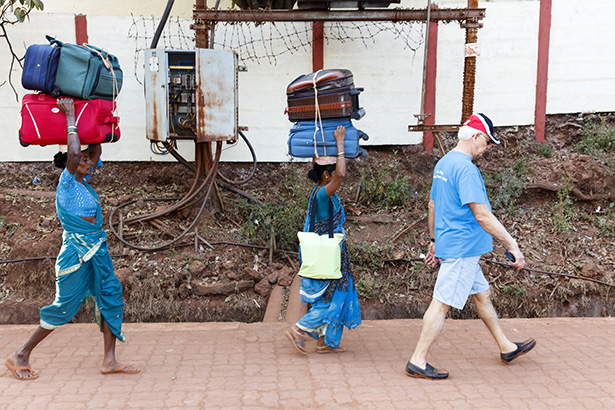
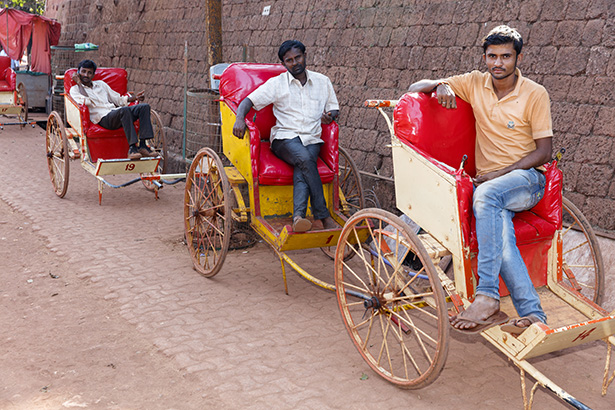
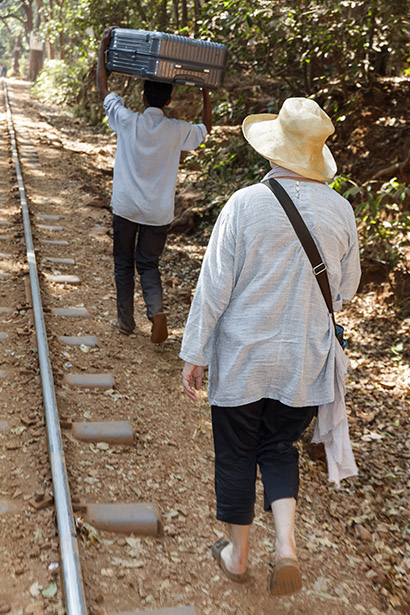
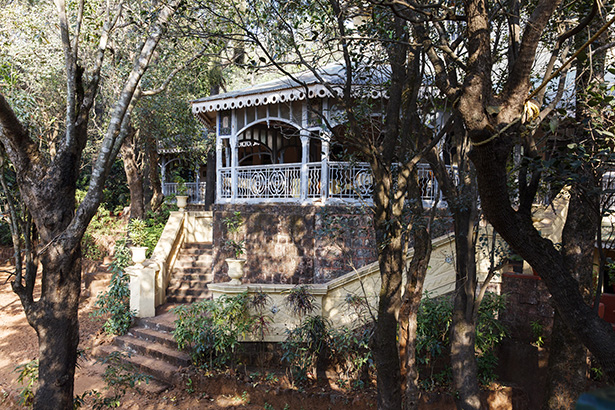
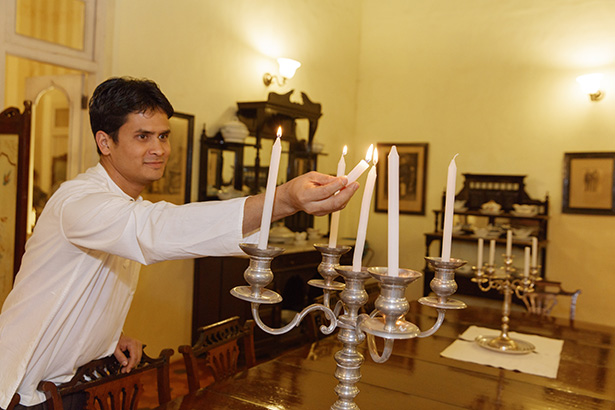

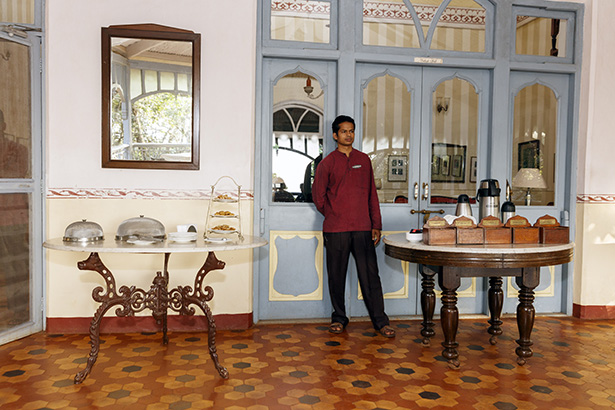
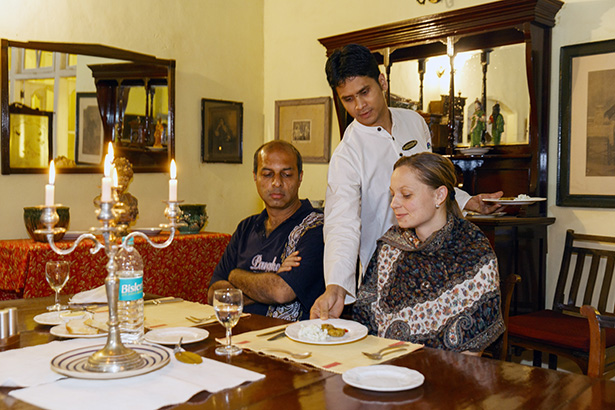
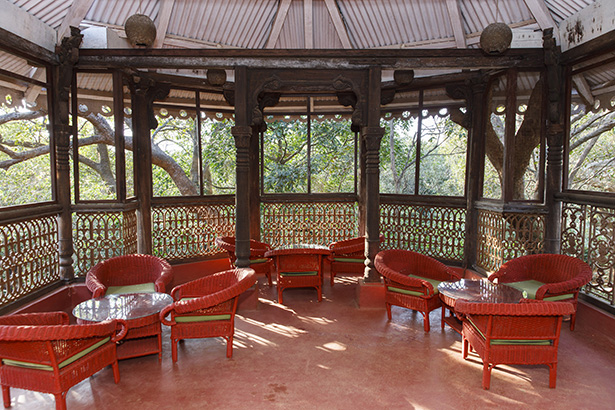
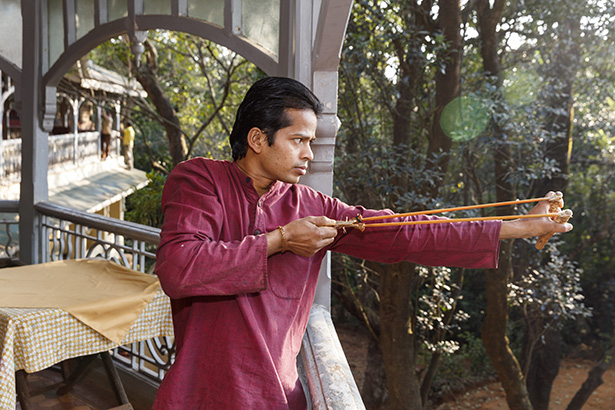

Comments are closed.